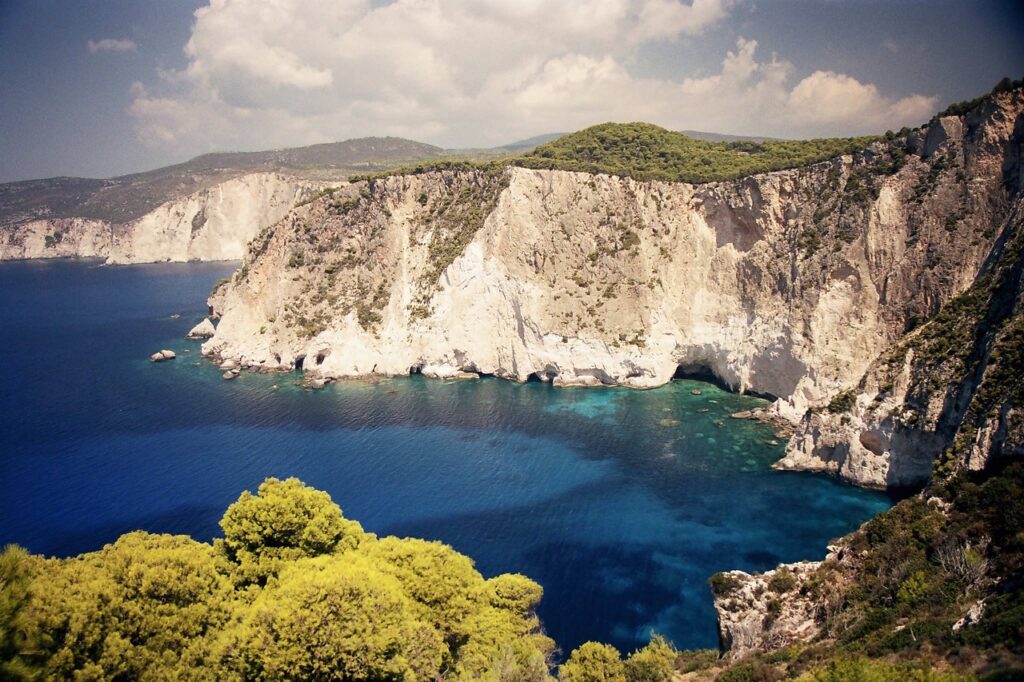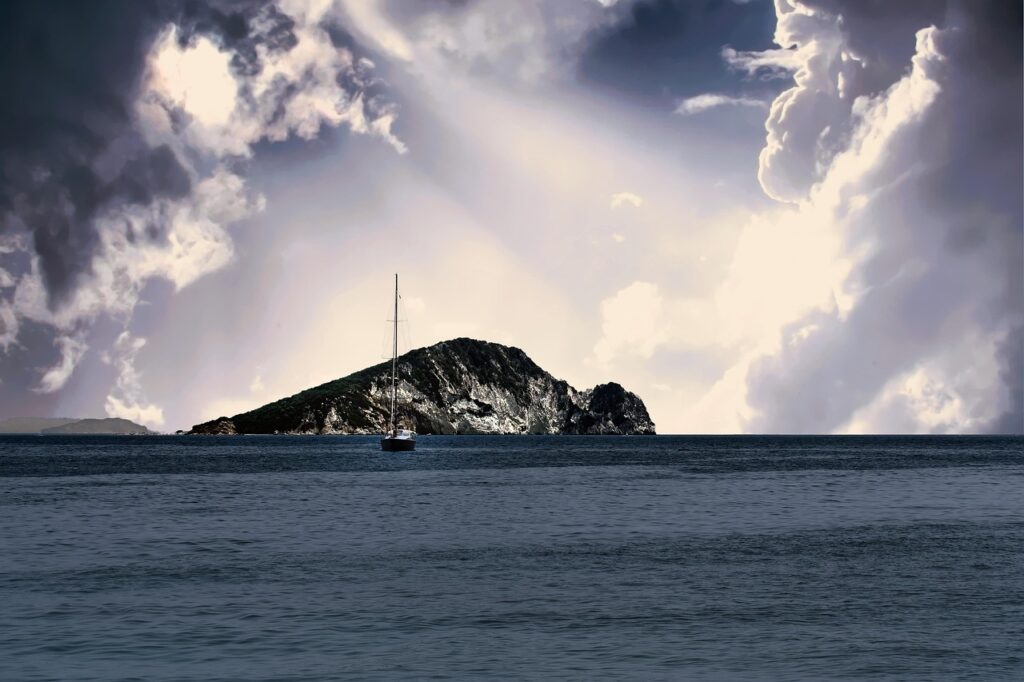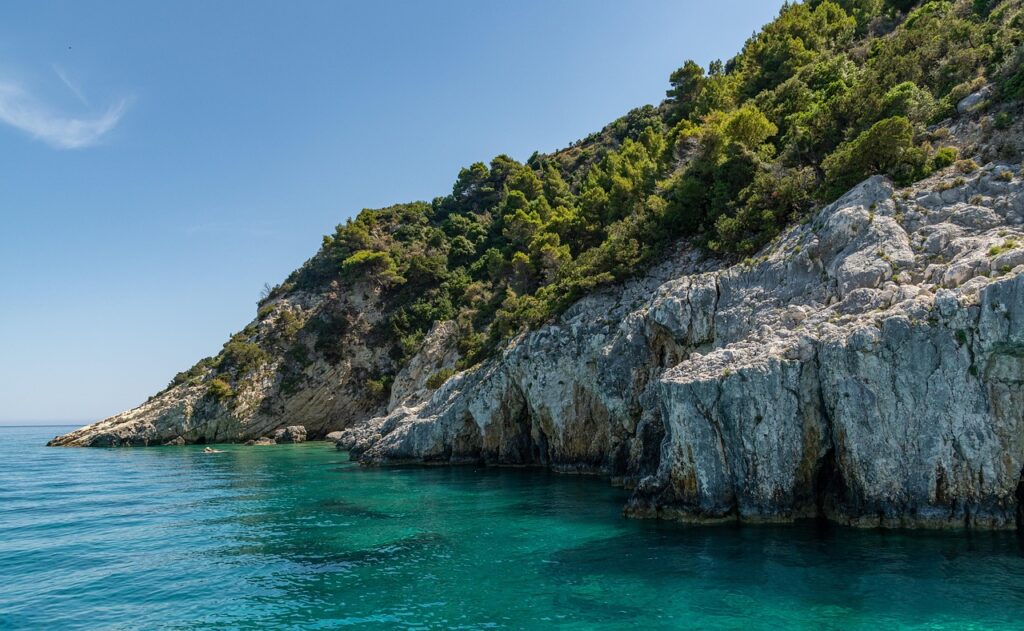
Alright, listen up, travel lovers! If you’ve ever dreamed of an escape to a place where turquoise waters meet dramatic cliffs and history whispers from every corner, then buckle up. We’re about to dive deep into Zakynthos, also affectionately known as Zante – the “Flower of the Levant,” a title bestowed by the Venetians who were captivated by its beauty from 1484 to 1797. This isn’t just another Greek island; it’s a vibrant tapestry woven with ancient myths, resilient history, breathtaking landscapes, and a lively modern spirit that makes it an absolute must-visit destination.
Forget everything you thought you knew about paradise, because Zakynthos is about to redefine it for you. This Greek island in the Ionian Sea is the closest thing to paradise on earth, boasting a wonderful natural landscape and magical beaches that will leave you utterly spellbound. We’re talking about an island that promises an exotic holiday experience, whether you’re floating on its mesmerizing waters or exploring its picturesque hilltop villages and traditional monasteries.
From its intriguing ancient past to its stunning geographical features and the undeniable charm of its capital, Zakynthos offers a journey like no other. So, get ready to uncover some seriously cool facts and discover why this southernmost gem of the main Ionian Islands group should be at the very top of your travel bucket list. Let’s peel back the layers and see what makes this Ionian beauty so incredibly special!
1. **Zakynthos: Where Myths Meet Ancient Empires**Before it was enchanting British tourists and Instagram feeds, Zakynthos was already making waves in ancient Greek mythology and history. The island’s very name, like others ending in -nthos, hints at a pre-Mycenaean or Pelasgian origin, giving it roots that stretch back further than many can imagine. Legend has it, the island was named after Zacynthus, the son of the legendary Arcadian chief Dardanus, truly cementing its place in the annals of ancient tales.
But it wasn’t just mythical figures who graced these shores. The legendary ancient Greek poet Homer himself mentioned Zakynthos in both the Iliad and the Odyssey, painting vivid pictures of its early inhabitants. He states that the island’s first residents were Zacynthus and his men, confirming its significance in the heroic age. Before receiving its current name, the island was even known as Hyrie, adding another layer to its fascinating nomenclature.
This island was a player in the grand narratives of ancient Greece, not just a bystander. Zakynthos was conquered by King Arkesios of Kefalonia, and later, none other than Odysseus from Ithaca held sway. The island even participated in the epic Trojan War, earning its spot in the Homeric Catalogue of Ships. If that catalogue is accurate, it provides a snapshot of the geopolitical situation in early Greece, somewhere between the Late Bronze Age and the eighth century BC. Talk about a storied past!
2. **A Pivotal Point in Ancient Conflicts and Commerce**Zakynthos wasn’t just a picturesque backdrop for ancient myths; it played a very real and strategic role in the power struggles of the classical world. During the First Peloponnesian War, between 459 and 446 BC, the Athenian military commander Tolmides secured a crucial alliance with Zakynthos. This alliance would prove to be a significant maneuver in the ongoing conflicts that shaped ancient Greece.
However, this strategic importance also made it a target. In 430 BC, a Lacedaemonian force, numbering around 1,000 heavy infantry and led by the Spartan admiral Cnemus, launched an attack on Zakynthos. Despite their efforts to burn much of the surrounding countryside, the city bravely refused to surrender. The Spartan assault ultimately failed, showcasing the islanders’ formidable resilience and determination in defending their home.
Following these tumultuous events, the Zakynthians found themselves listed among the autonomous allies of Athens in the ill-fated Sicilian expedition. Their allegiance continued to shift with the tides of power; after the Peloponnesian War, Zakynthos seemingly fell under the supremacy of Sparta. This is evident from events in 374 BC when Timotheus, an Athenian commander, assisted Zakynthian exiles in establishing a fortified post, leading to the Spartans dispatching a fleet of 25 ships to the island in response to pleas for help.
But beyond military alliances, Zakynthos offered something invaluable to the Athenians: tar. This wasn’t just any tar; it was a more effective protector of ship planking than traditional pitch, which was derived from pine trees. The Athenian trireme fleet desperately needed protection from rot, decay, and the dreaded teredo, making this new source of tar incredibly valuable. The ingenious method involved dredging tar from the bottom of a lake, now known as Lake Keri, using leafy myrtle branches tied to poles. It was then collected in pots, ready to be directly swabbed onto ship hulls or shipped to the Athenian naval yard at Piraeus for storage. In addition to tar and miltos, the Athenians also sourced crucial timber for shipbuilding from various regions, a necessity given Greece’s limited forest resources, to maintain their formidable naval fleet.
Read more about: Unpacking America: 14 Mind-Blowing Facts About the USA You Absolutely Need to Know!

3. **The Venetian ‘Flower of the Levant’ and Shifting Tides**Fast forward to the early 3rd century BC, and we see Philip V of Macedon seizing control of Zakynthos while it was a member of the Aetolian League. But the island’s story didn’t end there; it continued to be a coveted prize. In 211 BC, the Roman praetor Marcus Valerius Laevinus captured the city of Zakynthos, though the citadel remained defiant. The city was later restored to Philip V, demonstrating its persistent significance.
However, Rome’s ambition wouldn’t be denied forever. The Roman general Marcus Fulvius Nobilior finally conquered Zakynthos in 191 BC, marking its incorporation into the vast Roman Empire. Even then, its strategic location meant it wasn’t immune to further challenges, as it was attacked by Archelaus, the general of Mithridates, during the Mithridatic War, though he was ultimately repulsed.
The medieval period brought new waves of invaders and rulers. In 459, the island faced the Vandals under Geiseric, who plundered it and carried off 500 local aristocrats. Yet, Zakynthos seems to have been remarkably spared from the Slavic invasions of the 6th–7th centuries, with no Slavic names attested on the island. For much of the middle Byzantine period, it belonged to the Theme of Cephallenia, and its bishopric was suffragan to Cephallenia, later Corinth. Raids by Aghlabids in 880 and Pisans in 1099, and capture by Margaritus of Brindisi in 1185, only underscore its continuous geopolitical importance.
It was the Venetians, however, who truly left an indelible mark, bestowing upon Zakynthos its poetic nickname, “the Flower of the Levant.” They ruled the island for a significant period, from 1484 to 1797, after it had been briefly captured by the Ottoman Empire in 1478. During the reign of Mehmed II by 1460, the Ottomans controlled most of the Peloponnese, leaving Leonardo III Tocco’s realm vulnerable. He agreed with Venice to accept 10,000 refugees from the region, consisting of Greeks, Arvanites, and Venetian officials, further entrenching the Venetian presence. The Venetian architectural influence, with arch-shaped windows and arcades, is still visible today, despite the devastating 1953 earthquake.

4. **A Beacon of Humanity During World War II**While Zakynthos boasts stunning natural beauty and a rich historical tapestry, one of its most compelling stories emerges from the dark days of World War II. During the Axis occupation of Greece, the island became a symbol of incredible courage and humanity, a stark contrast to the atrocities unfolding across Europe. The actions of its local leaders during this time are truly inspiring and deserve all the recognition.
Mayor Loukas Karrer and Bishop Chrysostomos Dimitriou stood firm against unimaginable pressure. They bravely refused German orders to hand over a list of the town’s Jewish community members for deportation to the death camps. This was a direct defiance of the Nazi regime, a decision that carried immense personal risk. Instead of complying, they embarked on a heroic mission to protect their fellow citizens.
Working together, these two remarkable individuals hid all, or at least most, of the town’s Jewish people in rural villages, effectively spiriting them away from the clutches of persecution. Their extraordinary efforts resulted in a nearly miraculous outcome: according to some sources, all 275 Jews of Zakynthos survived the war. This stands in stark contrast to the tragic fate of over 80% of Greek Jews, who were deported to death camps and murdered in the Holocaust.
Both Mayor Karrer and Bishop Chrysostomos were later deservedly recognized as Righteous among the Nations by Yad Vashem, an honor that underscores their incredible bravery and moral fortitude. This chapter in Zakynthos’ history is a powerful testament to the human spirit, demonstrating how compassion and defiance can triumph even in the face of overwhelming evil. It’s a reminder that heroism isn’t just found on battlefields, but in the quiet, courageous decisions of everyday leaders.
Read more about: Fact vs. Fiction: 14 Historical Myths You Probably Still Believe

5. **Geography That’ll Make Your Jaw Drop**Zakynthos isn’t just historically rich; it’s also a geographical marvel, offering an incredible variety of landscapes packed into its 405.55 km² (156.6 sq mi) area. Lying in the eastern part of the Ionian Sea, it’s strategically positioned about 20 kilometers (12 miles) west of the Greek mainland (Peloponnese), with the island of Kefalonia just 15 kilometers (9 miles) to its north. It proudly stands as the southernmost of the main Ionian Islands, excluding the distant Kythira.
The island itself is a fascinating study in contrasts, approximately 40 kilometers (25 miles) long and 20 kilometers (12 miles) wide, with a coastline stretching for about 123 kilometers (76 miles). Its shape is often described as an arrowhead, with Cape Skinari, its northernmost point, acting as the tip pointing northwest. This distinctive form hints at the diverse terrains waiting to be explored by curious visitors.
The western half of Zakynthos is a mountainous plateau, characterized by rugged beauty and dramatic elevations, with Vrachionas being its highest point at 758 meters (2,487 feet). The southwest coast is a spectacle of nature, dominated by steep cliffs that plunge into the Ionian Sea, creating breathtaking vistas. Meanwhile, the eastern half presents a completely different picture: a densely populated, fertile plain dotted with long, inviting sandy beaches. This gentler landscape is occasionally interrupted by isolated hills, with Bochali standing out as it proudly overlooks the capital city.
The coastline is further defined by two prominent peninsulas: Vassilikos to the north and Marathia to the south. These embrace the wide and shallow bay of Laganas on the southeast part of the island, a feature that plays a significant role in the island’s unique ecosystem. This incredible geographical diversity ensures that whether you’re a mountain trekker, a beach bum, or a cliffside admirer, Zakynthos has a stunning view and an adventure just for you.

6. **Zakynthos Town: The Charming Capital with a Venetian Heartbeat**Every great island needs a captivating capital, and Zakynthos Town delivers in spades! Also known simply as Chora, which is a common Greek denomination for an island’s main town when it shares the island’s name, this bustling hub is located on the eastern part of the northern coast. It’s the administrative seat of the regional unit and the only municipality, making it the vibrant heart of the island’s life and activity.
Walking through Zakynthos Town, you can still feel the strong influence of its Venetian past, even after the devastating 1953 earthquake that destroyed most of the island’s buildings. The town was meticulously rebuilt according to strict anti-seismic specifications, largely respecting its former architectural structure. This means you’ll find charming traditional architectural features like arch-shaped windows and arcades, especially around Solomos Square, which is surrounded by these characteristic buildings.
The town is a treasure trove of culture and history. Solomos Square is a prime example, not only housing the bust of Dionysios Solomos, Greece’s national poet, but also the Public Library with its 55,000 volumes, and the Post-Byzantine Museum of Zante. This museum showcases stunning artifacts like statues trimmed with gold, ancient icons, and intricate art woodcuts. Just imagine the stories these treasures could tell!
Don’t miss Agios Markos Square, another central meeting point, famous for where revolutionaries burned the Libro d’ Oro and planted the tree of freedom in 1797. The Museum of Solomos, Kalvos and Eminent Zakynthians is also located here, featuring a bust of the Greek national poet created by Georgios Broutos in 1902. For shoppers and history buffs alike, Alexandros Romas Street, known as Rouga, with its impressive arcades, has been the main commercial center for centuries. And for a dose of panoramic views and history, the Venetian Castle, situated on a hill dominating the town, stands on the site of the old acropolis named Psofis, offering breathtaking vistas that are absolutely worth the climb. It’s truly a place where history comes alive with every step you take!
Okay, let’s pick up right where we left off, diving even deeper into what makes Zakynthos truly unforgettable. If you thought we’d already covered all its charms, think again! This island is a gift that keeps on giving, and now we’re peeling back more layers to reveal its incredible biodiversity, the rhythms of its climate, and even more breathtaking sights that are just waiting to be explored. Get ready for a journey that’s equal parts exhilarating and enlightening, packed with everything you need to know for your next Greek adventure!
7. **Rich Flora and Fauna: Zakynthos’ Natural Wonders**Beyond the stunning scenery, Zakynthos thrives with an abundance of life, both on land and in its crystal-clear waters. Thanks to a mild Mediterranean climate and generous winter rainfall, the island is blessed with dense vegetation, making it a lush green haven. This fertile environment supports a wealth of agricultural products that are integral to the local economy and culture.
You’ll find groves overflowing with olives, producing the rich olive oil that is a staple of Greek cuisine, alongside vineyards yielding grapes for local wines. Citrus fruits burst with flavor, and perhaps most famously, the Zante currant—a small, sweet, seedless grape native to the island—holds a special place in its agricultural heritage. It’s a testament to the island’s rich soil and ideal growing conditions that such diverse produce flourishes.
However, the true stars of Zakynthos’ natural world are found off its shores. The Bay of Laganas is not just a beautiful stretch of coastline; it’s the site of Greece’s first National Marine Park and serves as the Mediterranean’s primary nesting area for the magnificent loggerhead sea turtles, known scientifically as Caretta caretta. These gentle giants return to the island’s fine white sands every spring and summer to lay their eggs, a truly awe-inspiring natural spectacle.
Visitors to beaches like Gerakas, a renowned nesting ground, are given specific guidelines to ensure these endangered creatures are protected. The beach, for instance, is off-limits between dusk and dawn from May to October to allow the turtles to nest undisturbed and their hatchlings to safely make their journey to the sea. It’s an incredible privilege to witness this natural cycle, and observing these rules helps preserve this vital ecosystem for generations to come. Beyond the loggerheads, great care is also taken to protect another endangered species, the elusive Monachus monachus seal, highlighting Zakynthos’ commitment to marine conservation.
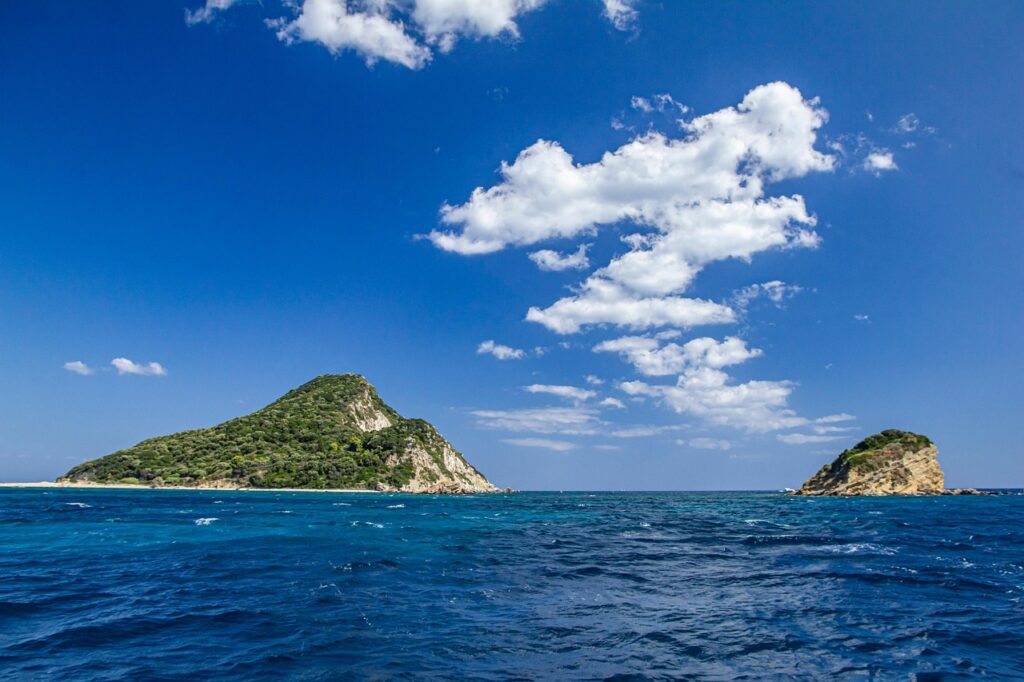
9. **Zakynthos’ Characteristic Climate: Sunshine and Showers**Understanding the climate of Zakynthos is key to planning your perfect visit, and thankfully, it’s a delightful hot-summer Mediterranean climate (Csa) that offers plenty of sunshine. This means you can generally expect hot, dry summers and mild to cool, rainy winters. It’s that classic Greek island weather we all dream of, with long, sun-drenched days perfect for exploring its magical beaches and natural wonders.
Like many of its Ionian neighbors, Zakynthos receives a considerable amount of precipitation during the winter months, which is precisely what contributes to its lush, green landscape, creating a vibrant contrast to the drier summer months. However, when summer arrives, the island truly shines, with mostly hot and sunny conditions making it ideal for holidaymakers seeking warmth and light.
The average annual temperature on Zakynthos hovers around a pleasant 18.5 °C (65.3 °F), ensuring a comfortable atmosphere for most of the year. Humidity, while noticeable, remains fairly high throughout the seasons, even during the peak summer months. This adds a certain vibrancy to the air, making the lush vegetation feel even more alive and the sea air refreshingly moist.
If you’re looking to hit the sweet spot for your visit, the shoulder months of April, May, June, and September are absolutely fantastic. During these periods, the weather is delightfully warm but not overwhelmingly hot, averaging a comfortable 18°C (64°F) to 28°C (82°F). The beaches are far quieter, offering a more serene experience, and it’s an excellent time for activities like exploring local wineries, or embarking on invigorating hikes and bike rides along the stunning coast. While July and August see temperatures frequently topping 30°C (86°F) and a surge in visitors, peaceful corners can still be found if you venture beyond the main resorts.

9. **Iconic Natural Sights: Beyond Shipwreck Beach**Alright, let’s talk about the absolute showstoppers of Zakynthos’ natural landscape. While you’ve undoubtedly seen countless images of Navagio, often dubbed Shipwreck Beach, it truly lives up to its blockbuster reputation. Picture this: vertical, soaring cliffs cradling a perfect crescent of cream-colored sand, all set against a sea so vividly turquoise it looks like liquid Blue Curaçao. And right there, nestled in the sand, is the rusted hulk of a cargo ship from the 1980s, creating an impossibly picturesque scene that’s every bit the castaway fantasy.
The view from above, particularly from the cliffside viewpoint, is nothing short of breathtaking and a must-do for any visitor. But to truly immerse yourself in its magic, you simply have to experience a dip in its enticingly clear waters, accessible only by boat. Imagine bouncing across the bay on a speedboat, perhaps even spotting dolphins, to be the first to arrive and claim your slice of paradise before the crowds.
But don’t stop there, because Zakynthos is brimming with other equally enchanting natural wonders. Head to the northern tip of the island, around Cape Skinari, and you’ll discover the mesmerizing natural “blue caves.” These sea caves, carved into the cliffs, are a marvel of nature, where the sunlight reflecting off the white cave bottoms paints the water an ethereal, luminous blue. They’re typically explored by small boat tours, allowing you to venture deep inside and witness this incredible optical illusion up close.
Venturing south, the charming mountain village of Keri offers more than just stunning views; it’s home to a historic lighthouse that stands proudly against the backdrop of dramatic cliffs. The entire western shore, stretching from Keri up to Skinari, is a rugged spectacle of rock formations, including impressive arches and sea caves, ideal for exploration by boat or even sea kayak. And for those seeking more serene sandy shores, the northern and eastern coasts boast numerous wide, inviting beaches, including the famous Laganas, Gerakas, Vasilikos, and Spiantza, each offering its own unique slice of Ionian bliss. You can even visit Marathonissi islet, also known as “Turtle Island,” with its tropical vegetation, turquoise waters, and unique sea caves.
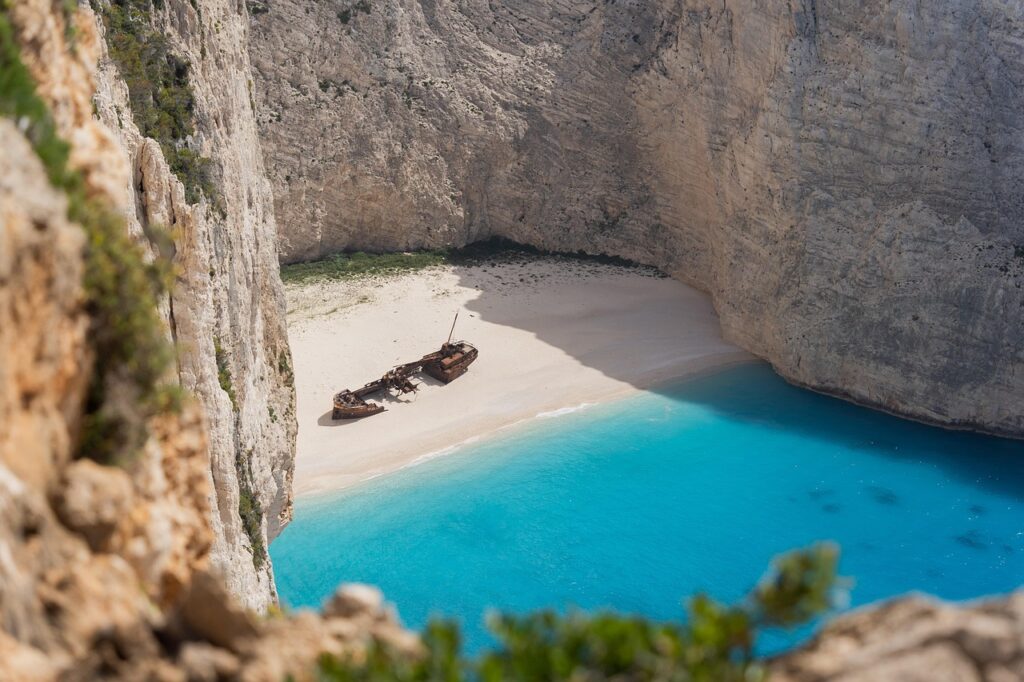
10. **A Tapestry of Tradition: Zakynthos’ Cultural Heartbeat**Zakynthos isn’t just about sun and sea; it’s a vibrant island steeped in a rich cultural heritage that truly sets it apart. Thanks to centuries of Venetian rule, the island enjoyed closer ties to Western literary and artistic trends than many other Greek regions, fostering a unique blend of influences that are still celebrated today. This deep connection birthed a flourishing intellectual scene, particularly evident in its literary traditions.
The island boasts a remarkable literary legacy, dating back to the 16th century with works like the “Rimada,” a romance in verse about Alexander the Great. Notable early writers such as Tzanes Koroneos, Nikolaos Loukanis, Markos Defaranas, Pachomios Roussanos, and Antonio Catiforo all hailed from Zakynthos, contributing to its intellectual vibrancy. Towards the end of the 18th century, the island became a cradle for the Heptanese School of Literature, a movement that embraced Romanticism and played a crucial role in developing modern Greek theatre, producing revered poets like Dionysios Solomos, Greece’s national poet, and Nikolaos Koutouzis.
This artistic fervor extends to the visual arts and music. Nikolaos Koutouzis was also a prominent figure in the Heptanese School of Painting, ensuring the island’s contribution to Greek art history. While not explicitly detailed as an art school, the presence of the Heptanese School of Music and the traditional Cuisine of the Ionian islands further underscore a diverse cultural landscape. The Museum of Solomos, Kalvos and Eminent Zakynthians, located on St Mark’s plaza, is a fantastic place to delve into this heritage, showcasing local art, sculptures, musical instruments, and ceramics from the 18th and 19th centuries, celebrating figures like Solomos and Andreas Kalvos.
The island’s cultural calendar is also packed with unique traditions. Imagine the lively atmosphere during the Carnival festivities, where a traditional town crier announces the program, culminating in the procession of the Carnival King and the symbolic “Mask Funeral.” Religious celebrations are equally vibrant, particularly the Holy Week in Zakynthos, renowned for its ancient customs and exceptional rites. From the Good Friday procession of the Crucified to the dramatic Holy Saturday epitaph procession, where the Bishop announces the Resurrection at sunrise, white doves are released, and clay vessels are thrown from windows—it’s an unforgettable experience that beautifully blends faith and folklore.
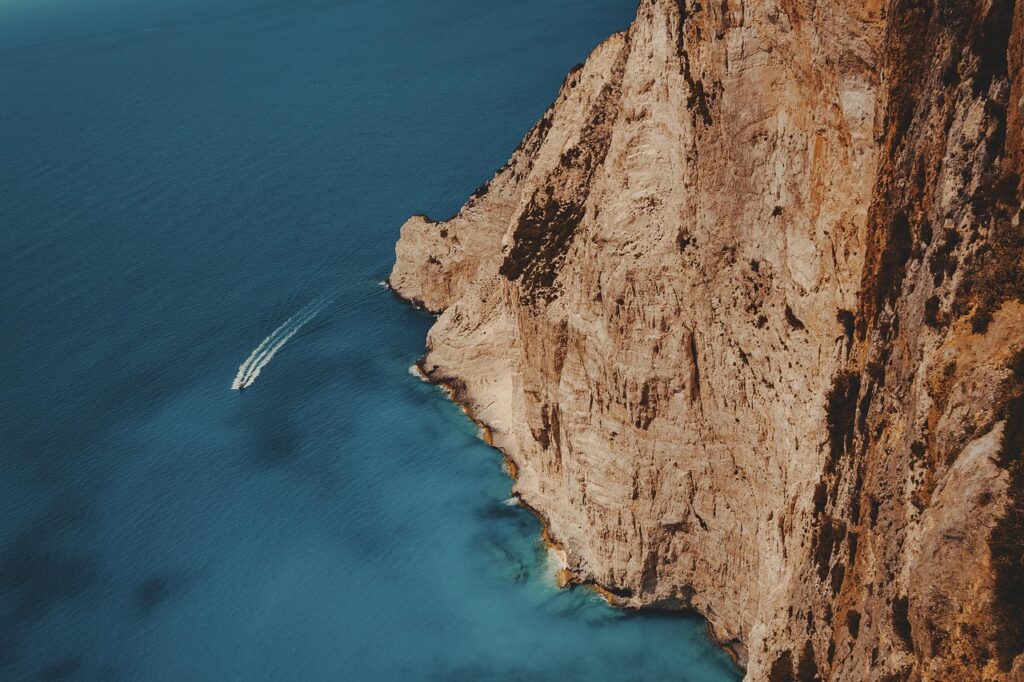
11. **Navigating Zakynthos: Essential Travel Tips**Planning your trip to Zakynthos means getting a handle on the best times to visit, where to stay, and how to get around this incredible island. First things first: getting there is a breeze! Zakynthos is well-connected to the rest of Greece by ferry and to Europe by plane, especially with its international airport (ZTH) which opened in 1972 and is located just 4.3 km from Zakynthos Town. Airlines like British Airways, EasyJet, Eurowings, TUI, and Ryanair offer frequent flights, especially during peak season, making it easily accessible from northern Europe.
Once you land, getting to the island from the mainland is straightforward thanks to fast ferries that link the main port of Zakynthos Town with Kyllini on the Peloponnese (a quick one-hour journey). If you’re island-hopping, another ferry connects the village of Agios Nikolaos to Argostoli on Kefalonia in about 90 minutes. These services typically run at least daily from mid-May to October, ensuring smooth connections for travelers.
Now, about getting around on Zakynthos itself – it’s incredibly easy! You can rent your own set of wheels, whether it’s a car for extensive exploration, a moped for zipping around coastal roads, or even a bike or e-bike for a more active adventure, all readily available from most resorts and towns. This gives you the freedom to reach some of the island’s remoter, hidden gems. Alternatively, the KTEL buses efficiently crisscross the island, stopping at all the main towns and coastal resorts, with more frequent services during the bustling summer months.
When considering your base, Zakynthos offers a delightful array of options to suit every mood. Zante Town provides an appealing mix of tavernas, nightlife, cultural sights, and easy access to boat trips. If you’re looking for a lively atmosphere, the party-loving resorts of Laganas, Tsilivi, and Argassi are definitely your scene. For those craving a quieter, more relaxed escape, Vassilikos, Alykanas, Kalamaki, and Skinari offer serene alternatives, each providing a fantastic starting point for your island explorations. A week is a good benchmark to experience the highlights, but tack on an extra week if you want more lazy beach days and trips to dreamy islets like Cameo Island and Marathonisi.

12. **The Modern Allure: Tourism and the Zakynthian Experience**Zakynthos has truly evolved into a multifaceted tourist destination, catering to a diverse range of visitors while retaining its inherent charm. Since the mid-1980s, it has gained a reputation as a vibrant hub for 18-to-30-year-old tourists, particularly centered around Laganas. What was once a quiet village has transformed into a lively hotspot, brimming with clubbing venues, pulsating nightclubs, welcoming bars, and an array of restaurants, offering an energetic party scene for those looking to dance the night away.
However, it would be a mistake to characterize the entire island solely by this energetic nightlife. Zakynthos beautifully balances this youthful vibrancy with tranquil escapes and enriching cultural experiences. The context explicitly notes that “the party island” atmosphere is “mostly contained to the south,” meaning you can easily slip away from the crowds and find your own slice of paradise. The island seduces travelers who prefer to explore on foot, by bike, boat, or sea kayak, discovering limestone cliffs, castaway beaches, rugged olive and grapevine-carpeted interiors, and ruined Venetian towers commanding breathtaking sunset views.
Beyond the resorts and the lively evenings, the island provides a plethora of daytime activities to keep you entertained. Scuba diving in its clear waters reveals a rich marine world, while boat tours offer unparalleled access to hidden coves and the iconic Shipwreck Beach. Water sports abound on its many beaches, providing fun and thrills for all ages. You can also explore the island’s interior, stepping into its more traditional rhythm, with opportunities for wine tasting among the vines or leisurely strolls through time-lost stone villages shaded by ancient olive trees.
Whether you’re after a thrilling party holiday, a serene nature retreat, or a blend of cultural immersion and active exploration, Zakynthos truly offers it all. It’s an island that invites you to make your own adventure, promising an exotic holiday experience that redefines paradise. From floating on its mesmerizing turquoise waters to exploring picturesque hilltop villages and traditional monasteries, Zakynthos ensures there’s a stunning view and an adventure just for you, solidifying its place as a must-visit gem in the Ionian Sea.
So, there you have it – Zakynthos, an island that’s so much more than just a destination; it’s an experience waiting to unfold. From its ancient echoes and resilient spirit to its breathtaking natural wonders and vibrant cultural pulse, it truly is the ‘Flower of the Levant,’ captivating hearts and minds with every sun-drenched moment. Pack your bags, because paradise is calling, and Zakynthos is ready to enchant you!

